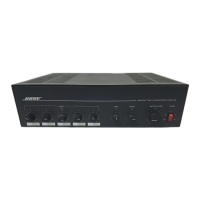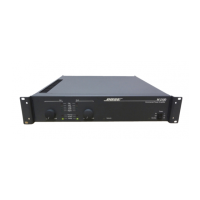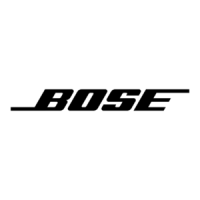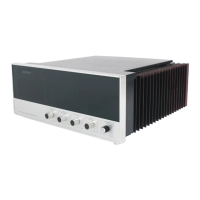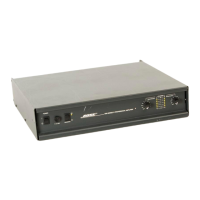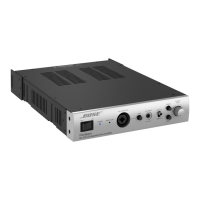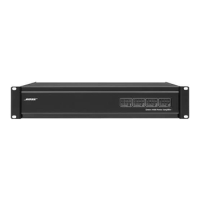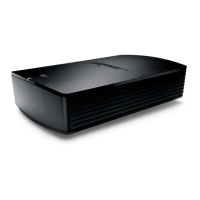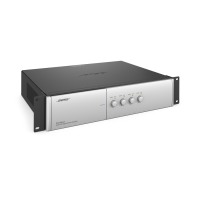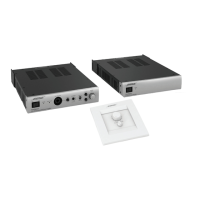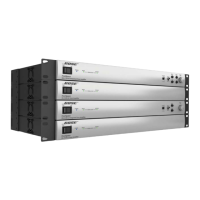2
SAFETY INFORMATION
ELECTROSTATIC DISCHARGE SENSITIVE (ESDS)
DEVICE HANDLING
This unit contains ESDS devices. We recommend the following precautions when repairing,
replacing or transporting ESDS devices:
• Perform work at an electrically grounded work station.
• Wear wrist straps that connect to the station or heel straps that connect to conductive
floor mats.
• Avoid touching the leads or contacts of ESDS devices or PC boards even if properly
grounded. Handle boards by the edges only.
• Transport or store ESDS devices in ESD protective bags, bins, or totes. Do not insert
unprotected devices into materials such as plastic, polystyrene foam, clear plastic bags,
bubble wrap or plastic trays.
The Bose
®
BUILT-INvisible
®
TA-1 Theater Amplifier is covered by a 1-year transferable
limited warranty
WARRANTY
1. Parts that have special safety characteristics are identified by the symbol on schematics
or by special notes on the parts list. Use only replacement parts that have critical characteristics
recommended by the manufacturer.
2. Make leakage current or resistance measurements to determine that exposed parts are
acceptably insulated from the supply circuit before returning the unit to the customer.
Use the following checks to perform these measurements:
A. Leakage Current Hot Check-With the unit completely reassembled, plug the AC line cord
directly into a 120V AC outlet. Do not use an isolation transformer during this test. Use a leakage
current tester or a metering system that complies with American National Standards Institute
(ANSI) C101.1 "Leakage Current for Appliances" and Underwriters Laboratories (UL) 6500 / IEC
60056 paragraph 9.1.1. With the unit AC switch first in the ON position and then in OFF position,
measure from a known earth ground (metal waterpipe, conduit, etc.) to all exposed metal parts
of the unit (antennas, handle bracket, metal cabinet, screwheads, metallic overlays, control
shafts, etc.), especially any exposed metal parts that offer an electrical return path to the chas-
sis. Any current measured must not exceed 0.5 milliamp. Reverse the unit power cord plug in the
outlet and repeat test. ANY MEASUREMENTS NOT WITHIN THE LIMITS SPECIFIED HEREIN
INDICATE A POTENTIAL SHOCK HAZARD THAT MUST BE ELIMINATED BEFORE RE-
TURNING THE UNIT TO THE CUSTOMER.
B. Insulation Resistance Test Cold Check-(1) Unplug the power supply and connect a jumper
wire between the two prongs of the plug. (2) Turn on the power switch of the unit. (3) Measure the
resistance with an ohmmeter between the jumpered AC plug and each exposed metallic cabinet
part on the unit. When testing 3 wire products, the resistance measured to the product enclosure
should be between 2 and infinite MOhms. Also, the resistance measured to exposed input/output
connectors should be between 4 and infinite MOhms. When testing 2 wire products, the resis-
tance measured to exposed input/output connectors should be between 4 and infinite MOhms.
If it is not within the limits specified, there is the possibility of a shock hazard, and the unit must
be repaired and rechecked before it is returned to the customer.
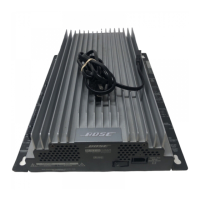
